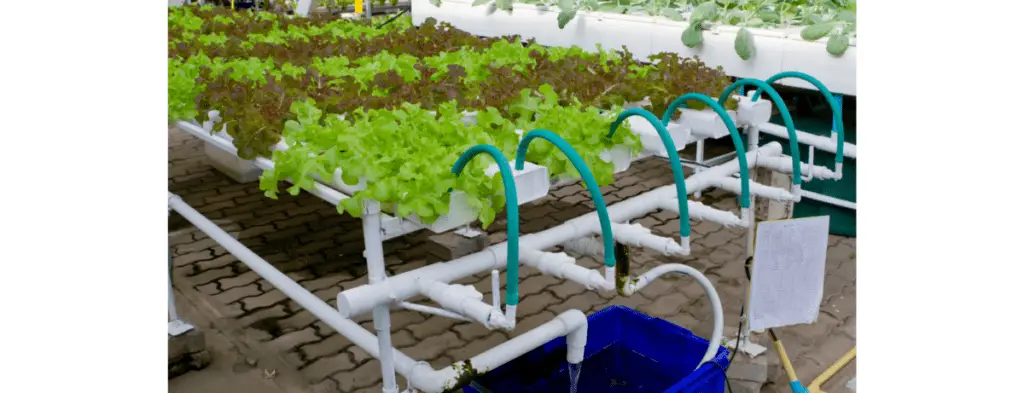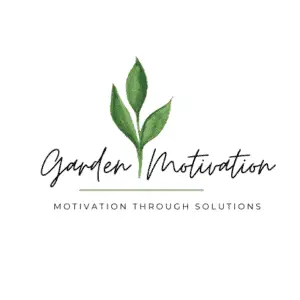
What Is A Hydroponic Garden?
It is a soilless horticulture method, where the crops are grown on water or a nutritious liquid/solution, as opposed to the conventional way of cultivating crops on the soil.
Hydroponics might sound like a foreign or new concept to many; however, contrary to popular belief, the idea of hydroponic gardens dates back to ancient times. Typical examples include ‘Chinampas’ or the Floating Gardens of the Aztecs, and the Hanging Garden of Babylon. These civilizations leveraged the immerse benefit of hydroponic to grow their herbs, flowers, and veggies.
In the modern day, hydroponic is gradually gaining popularity and revolutionizing farming as we know it, this is since it produces high-quality and faster yields than cultivating crops in the soil.
How Does A Hydroponic Garden Work?
As stated earlier, hydroponic is soilless, and yes, plants technically do not need soil to grow. Essentially, plants need soil for three main things:
- For anchorage
- For nutrients
- For water
Therefore, if there an environment can be tweaked to suffice these three needs, then plants will be able to thrive in that environment. This is why plants can grow perfectly fine in a hydroponic garden.
So, how does it work?
Well, there are various types of hydroponic systems; however, they all have the same function. Every hydroponics system consists of five main parts: a reservoir, anchorage, nutrient water, the circulating system, and a light system.
Reservoir: The purpose of the reservoir is to hold nutrients water.
The nutritious water: which serves as a source of water, oxygen, and nutrients for the plant; often, the nutrients are dissolved in water. Often the nutritional content of the water is tweaked based on the type of plant and its needs; this is done to ensure that plants get the best nutrients they need to grow successfully.
The anchorage: Any device that holds the plants in place typically the growth tray holds the plant in place and ensures that it stands upright.
The circulating system: often consists of two pumps; one pump ensures that the nutrients water from the reservoir is always constantly circulated throughout the hydroponic system; while the second pump also ensures that air is constantly supplied to the roots. So, what happens is that the roots of the plants are submerged in nutritious water, and the plants absorb the required nutrients and oxygen.
Light System: Just like any other farm or garden, light is a necessity. You will have to expose the plants in your hydroponic garden to sunlight for them to be able to make their food. With a hydroponic garden, there are two ways to achieve this; you can either grow the plants in a greenhouse to expose them to the sunlight, or you can grow them indoors and provide an artificial source of light for them. However, if you are growing them indoors, you must ensure that you do not expose the plant to constant light; this is because plants need darkness as much as light; therefore, you want your artificial lightning system to imitate that of the sun’s, meaning, 12 to 16 hours of light daily, and between 8 to 12 hours of darkness daily. Find out more about growing plants indoors without sunlight in this post.
Benefits Of Having a Hydroponic Garden?
There are tons of benefits when it comes to hydroponic gardens, some of which include:
1.) Cost Effectiveness
Growing crops hydroponically is more cost-effective than growing crops with soil. Even though the upfront or startup cost of a hydroponic garden might be expensive because you might have to purchase the system or components of the system, down the line, a hydroponic garden becomes cheaper than a garden grown on soil.
Also, the recent boom and popularity of hydroponics gardens are making the purchase of the system and components less expensive due to competition among various retailers. However, generally, we recommend that you set up your system–if you can– to save cost, as opposed to buying a whole system.
If you want to buy a system here are 5 inexpensive hydroponic systems we found.
| System | Cost |
| INTBUYING Hydroponic 36 Holes Plant Site Grow System | $125.99 |
| AirCube Active Oxygen Ebb and Flow Grow System | $597.00 |
| VEVOR Hydroponics Growing System | $102.99 |
| VEVOR Hydroponics Growing System | $699.95 |
| Active Aqua Root Spa 5 Gallon Hydroponics Bucket System | $50.95 |
2.) Versatile
Hydroponics makes it possible for gardening enthusiasts or a professional who lives in a high-rise apartment or any location where the soil isn’t available such as on the upper floors of apartments, or even areas where the soil is not fertile; you can easily set up your hydroponic system and then get started with your favorite crops. Read our Indoor Garden Ideas for Apartments post for more ways to garden indoors.
Therefore, if you live in an urban area such as New York, California, or any other major city where readily available land for farming might not be a luxury, you can still grow your favorite crops with no hassle.
3.) Reduced Pest
Another reason why most gardeners love hydroponics is due to the less pest infestation hydroponic gardens have. The truth is that soil is a habitat for many living organisms no matter how sterilized it might be, chances are there are still some living pests that might survive, and when you bring that type of soil into your home, you might end up sharing your living space with them.
Furthermore, many plant diseases are soil-based, and as we know, pests are the root cause of many of these diseases. However, when you grow plants hydroponically, the only thing you deal with is water and the nutrients you dissolve in the water; therefore, not only are you saving your home from pests but also, you are saving your plants from any disease, which might cause the plant to die or cause you to spend extra cash to treat those diseases.
In addition, weeds are an issue that is exclusive to soil-based agriculture; therefore, when you grow your plants hydroponically, you get to save yourself the stress of using pesticides or even save yourself from the nuisance of removing weeds yourself.
What this means is that with hydroponics, you will have to deal with far fewer chemicals such as pesticides, weedicides, or plant medication; this means that not only are you and your plants safe but also, you get to save time by avoiding activities such as pulls of weed, diagnosing and treating diseases, or using pesticides to kill pests. All you need to worry about is ensuring your system is running efficiently, and also, ensuring that you are supplying the right quantity and type of nutrients to the plants.
Finally, the avoidance of all the abovementioned chemicals ensures that the foods you grow are chemicals-free, clean, and nutritious.
4.) Climate Independence
Climate change is happening and we are experiencing it all around the globe, and it is going to have a direct effect on plants making it difficult for certain plants to adapt to the outside climate. The rising temperatures had led to many occurrences of droughts and wildfires, this has caused many gardeners to spend more than they budgeted for, or even in worst cases, the wildfires, can cause many gardeners to lose all their crops.
Well, the good news is that indoor hydroponics is immune to these two problems; because, since most hydroponic gardens are grown indoors, you can grow your favorite plant all year long without worrying about seasonality. This reduces the cost of having to import certain crops from other states or regions in your state. For example, you can grow strawberries in the winter or summer in a state like Texas.
Also, the adverse effect of climate change will not affect indoor hydroponic gardens that much, as opposed to a case, where the only option you have is to grow your plants outdoors.
5.) Reduced Water Usage
Since water is the main component required for every hydroponic garden, you might think that it will require large amounts of water. However, the truth is that a hydroponic garden uses less water than a soil-based garden. With hydroponics, you get to save up 90% of water, which is 10 times less than what you will use in a conventional garden.
So, how does this happen?
Well, as we know, with a soil-based garden, some of the water is absorbed by the soil, others get evaporated into the air, some percentage of the water is absorbed by pests and other living organisms, while the rest gets run off. Well, with hydroponics, the water stays in the system, and any unused water is stored and then gets repumped to the plants; therefore, there is no wastage. Furthermore, the plants wouldn’t have to compete with any biological or environmental factors for water, all the water, nutrients, and oxygen available is for the plant, and the plant only; this leads to the plants being grown in an optimal environment where it can thrive and flourish to give you the best yield possible.
This becomes a major advantage for people who live in arid or desert regions where there is water scarcity. Since you won’t be wasting much water, mostly due to evaporation.
Aquaponics vs Hydroponics: What’s The Difference?
So, you might be wondering what the difference between hydroponic and aquaponics is, right? Well, the simple answer is that there are various forms of hydroponics, and aquaponics is a type of hydroponics. Aquaponics involves growing fishes and crops, mostly vegetables, in the same environment. In this case, the fecal matter of the fish serves as a source of nutrition for the plants. Fish waste is a great source of nitrogen and many minerals, which are essential for plant growth. So, the water containing the fish waste is pumped into the tank containing the vegetables, or in some cases, they share the same habitat.
In exchange, the plants clean the water, and the cleaned water is repumped into the fish pond. Use reduce the amount of cleaning in your fish pond and, your plants will not have to worry about getting certain nutrients.
What Can You Grow On A Hydroponic Garden?
Even though hydroponics is a great horticulture method, it is only ideal for certain plants. Often hydroponic is used to cultivate fast-growing crops that have short roots and have a soft stem such as shrubs, herbs, vegetables, and vine fruits. Growing larger plants such as mangoes or oranges wouldn’t be ideal for hydroponics; this is because they have long roots (tap roots) which require them to dig deep into the soil for anchorage and growth.
Why Isn’t Hydroponic Garden Commercialized?
So, if the benefits of hydroponics are so good, you might be wondering why most farmers do not commercialize hydroponics? Well, the truth is that starting a large-scale hydroponic garden will require a huge initial capital; you will have to build a large greenhouse for this cause. Therefore, on a much larger scale, it tends to be not ideal for many farmers who do not have the capital or even the technical knowledge to build such a facility or even manage such a facility on a commercial scale. However, if you are looking to just feed a household, then hydroponics can be a great type of horticulture to consider due to its cost-effectiveness, and manageability. How much do you need to feed a family? Find out here.
This post contains affiliate links. If you make a purchase through these links, we may receive compensation at no additional cost to you.


